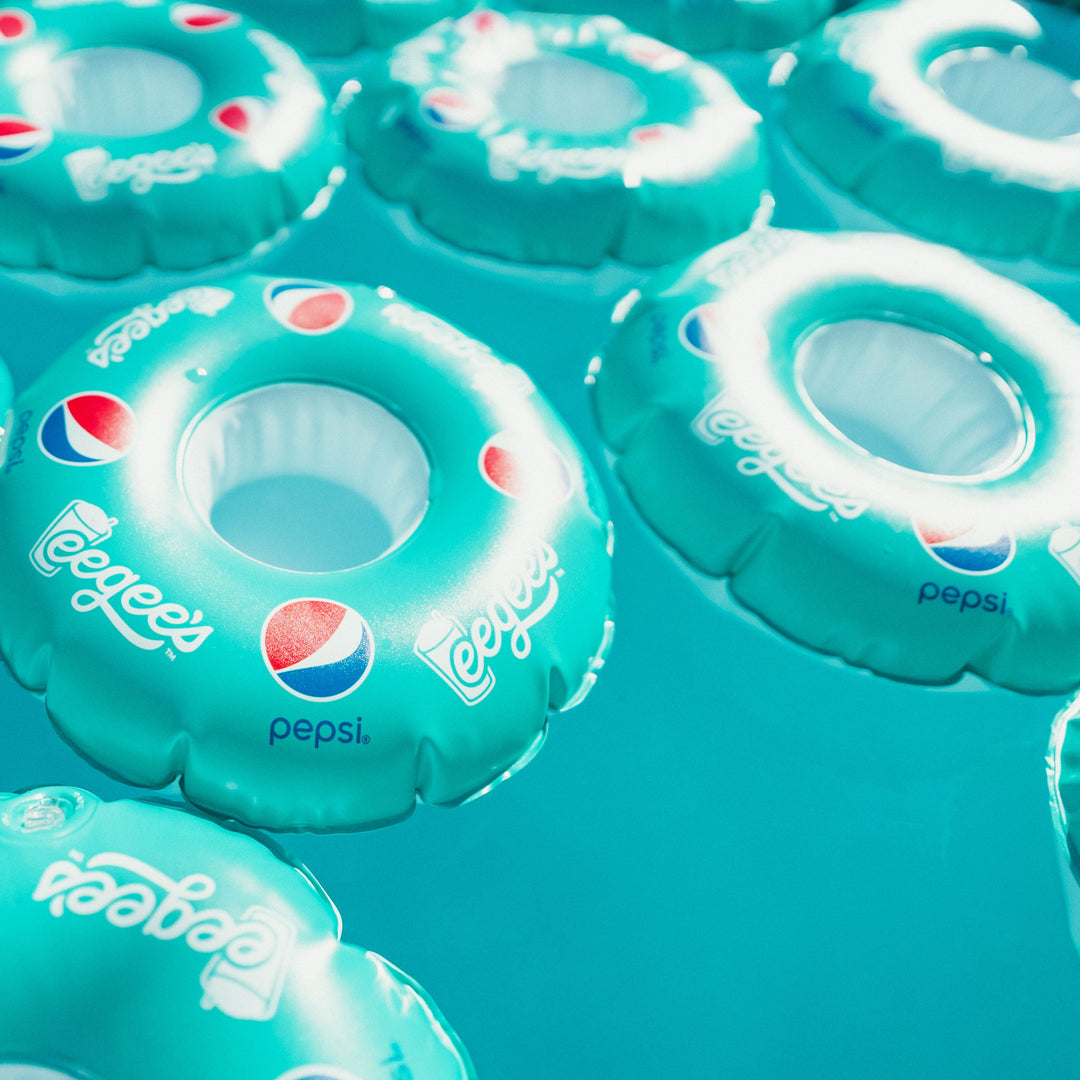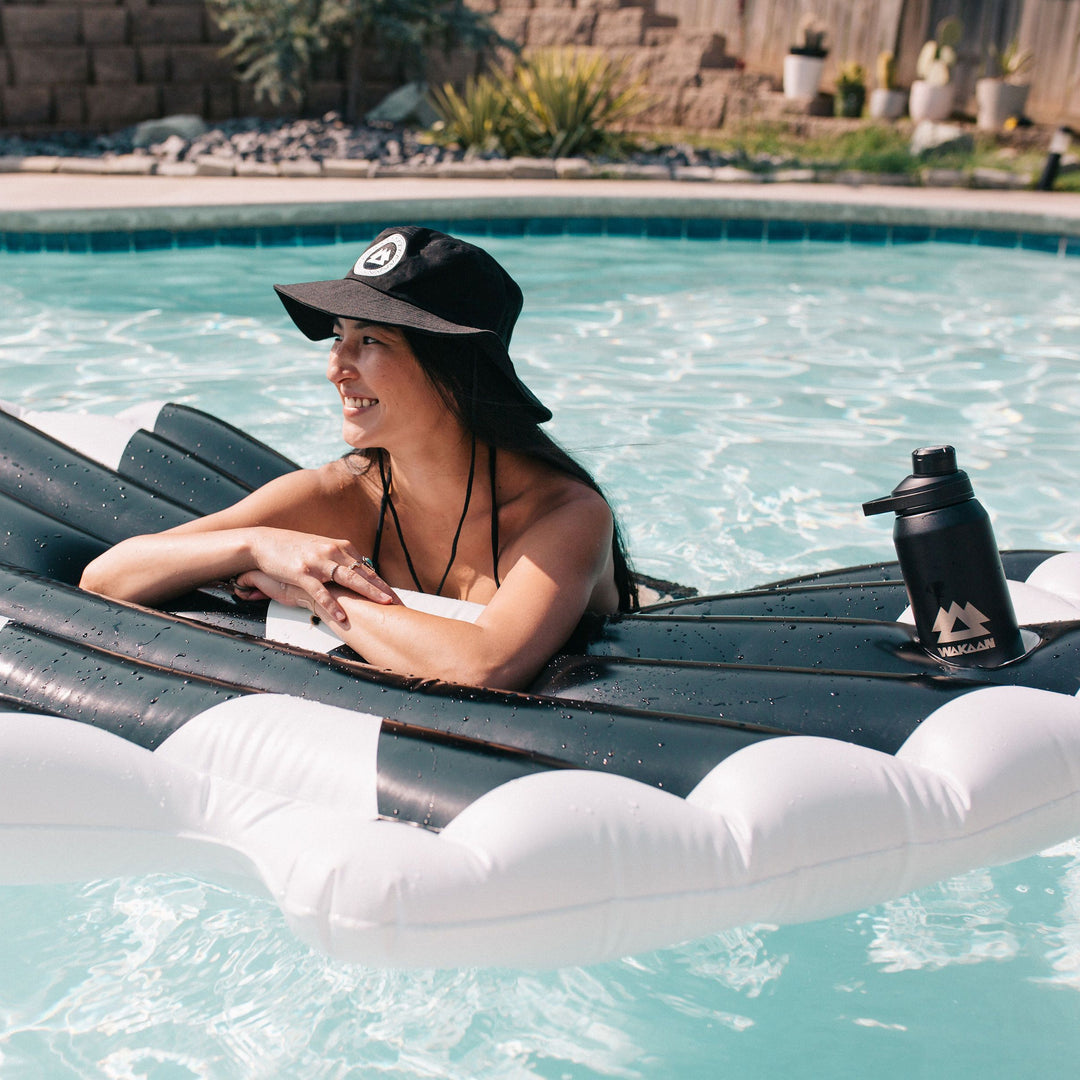How to Patch a Pool Float: Pro Tips
Are you tired of finding your pool float deflated every time you want to enjoy it? Don't worry; we've got you covered!
In our expert-level article, you’ll learn how to patch a pool float like a pro. From identifying the leak to choosing the right patch kit and reinforcing it for longevity, we have all the tips you need.
Common Causes of Pool Float Damage
Before we explore how to patch a floatie, it's important to understand what leads to pool float damage. Common causes include:
- Punctures: Sharp objects, rough surfaces, or even pet claws can puncture your custom pool floats.
- Prolonged Sun Exposure: sunlight can weaken materials, leading to cracks and leaks.
- Chemical Exposure: Harsh pool chemicals can deteriorate the integrity of your pool float over time.
- Improper Storage: Folding or storing pool floats in a cramped space may cause stress points and damage.
- Age: Like any product, pool floats have a lifespan, and with age, they become more susceptible to wear and tear.
You can take proactive steps to prevent future damage by identifying these factors.
Step-by-Step Guide to Patch Pool Float
Now that you know the potential causes of pool float damage, let's discover the step-by-step process on how to patch a pool float effectively.
Step 1: Identify the Leak
The first step in fixing a damaged pool float is learning how to find a hole in a pool float to identify the source of the leak. Inflate the float and listen for hissing sounds or feel for escaping air. Alternatively, submerge the inflated float in water and look for bubbles. Once you locate the leak, mark it for easy reference during the patching process.

Step 2: Select the Right Patch Kit
If you want to know how to fix a hole in a floatie effectively, choosing the right patch kit is crucial for a successful repair. Different pool float materials require specific adhesives and patches. For example, vinyl, mesh, and foam-filled floats each have unique characteristics, so select a patch kit designed for your float's material. Consult the manufacturer's guidelines for recommendations.

Step 3: Clean and Prepare the Surface
A clean and prepared surface is essential for a successful patch. Use a mild detergent or rubbing alcohol to clean the area around the leak. Ensure the surface is completely dry before proceeding to the next step. This preps the area for optimal adhesion and ensures a long-lasting repair.

Step 4: Apply the Patch
Follow the instructions on the patch kit carefully. Generally, you'll apply adhesive to both the patch and the damaged area, ensuring complete coverage. Press the patch firmly onto the leak, smoothing out any air bubbles. For additional reinforcement, apply pressure using a heavy object for the recommended drying time.

Step 5: Seal the Deal: Reinforce for Longevity
To enhance the longevity of your pool float repair, consider reinforcing the patched area. Applying a second adhesive layer or a larger patch can provide extra strength. Pay attention to the manufacturer's guidelines for specific recommendations on reinforcement techniques.

Step 6: Drying and Testing
Allow the patched area to dry completely before testing the float. Follow the recommended drying time provided by the patch kit. Once dry, inflate the float and check for any signs of leaks. If no air escapes, your patch is successful.

Bonus: Patching Different Pool Float Materials
Different pool float materials require distinct patching techniques. Use vinyl repair kits with clear adhesive for an inconspicuous finish for vinyl floats. Mesh floats may need a combination of patching and stitching, while foam-filled floats benefit from adhesive-backed patches. Always refer to the manufacturer's guidelines for specific recommendations.
How To Take Care of Your Pool Floats: 3 Maintenance Tips
Proper maintenance can significantly extend the life of your pool floats. Follow these tips:
- Use Proper Storage Techniques: Store your pool floats in a cool, dry place away from direct sunlight to prevent material degradation.
- Check for Damages: Regularly inspect your pool floats for any signs of wear, tear, or leaks. Address issues promptly to avoid extensive damage.
- Clean and Store Properly: Clean your pool floats with mild soap and water after each use. Allow them to dry completely before storing to prevent mold and mildew growth.
Final Thoughts
Learning how to patch a pool float can save you money and keep your favorite float in use for future seasons. Now we are confident that you know how to patch a hole in a pool float; by identifying the causes of damage, following a step-by-step patching guide, and implementing proper maintenance, you can enjoy your pool floats worry-free.
At Custom Inflatables, we craft high-quality pool floats and custom inflatables that make lasting memories for everyone. Let’s create your perfect floatie today!
FAQs on Pool Float Patching
How long does it take for the patch to dry completely?
The drying time depends on the specific patch kit used. Refer to the manufacturer's guidelines for accurate drying times. We recommend allowing the patch to dry for at least 24 hours before using the float again.
Is it necessary to patch both sides of the pool float?
In most cases, patching only the side with the leak is sufficient. However, if the damage is extensive or there is a risk of future leaks, reinforcing both sides can provide added durability.
Can I use duct tape for a quick fix?
While duct tape may provide a temporary solution, it is not recommended for a long-lasting repair. Invest in a proper pool float patch kit designed for your float's material for a more reliable and durable fix.
How to patch a pool float without a patch kit?
Clean the damaged area, apply waterproof adhesive, or use duct tape as a temporary fix, press the edges together, and let it dry before inflating. Consider buying a pool float repair patch kit for a more permanent solution.














